Additional 700 People Alive Today Thanks to Higher SLUHN COVID Survival Rate
March 20, 2023

St. Luke’s Nurse Practitioner Melanie Rivera in March 2020, donning the PPE, or personal protective equipment, that would become such a big part of the pandemic experience for health care workers.
On March 11, 2020, the World Health Organization declared the COVID-19 infection a global pandemic. St. Luke’s University Health Network admitted the Lehigh Valley’s first COVID-19 patient just nine days later – exactly three years ago. Since then, St. Luke’s has handled thousands of COVID cases and saved thousands of lives.
Thanks to St. Luke’s exceptional care and many innovations, the Network was significantly more successful at saving the lives of COVID-19 patients than many other health care systems and hospitals nationwide, according to St. Luke’s statistical analysis of hospital data drawn from PINC AI™, a leading technology and services platform owned by Premier Inc. of Charlotte, NC. Using this data, comprised of quality outcomes results from more than 1,300 U.S. hospitals, St. Luke’s found that the Network saved 700 more COVID-19 patients than would have been the case if the Network had performed similarly to a typical U.S. hospital.
“An additional 700 Lehigh Valley residents – our family members, neighbors and friends – are alive today because they were able to be treated for COVID-19 at St. Luke’s,” said St. Luke’s President & CEO Rick Anderson. “Industry experts acknowledge that the survival rate at St. Luke’s was much higher than statewide and nationally.”
“The early days of the pandemic before the development of effective treatments and vaccines were a very difficult time for our community and our health care providers,” Anderson said. “Despite the very serious risks to their own health and safety, our physicians, nurses, other caregivers and all our staff throughout our entire Network went to work day in and day out, providing the very best care and a human touch when it was needed most. They were brave, they were selfless, and they were heroes – and that is something I will never take for granted nor forget.
“The profound impact of the outstanding results accomplished through the incredible teamwork of St. Luke’s doctors, nurses and other staff over the course of the pandemic cannot be overstated and should not be undervalued. Think of the heartbreak our community has been spared: Seven-hundred extra lives saved! For each of these individuals who did not die of COVID-19, there are multiples of family members, relatives, friends, colleagues and countless others who have not had to grieve.”
Why were St. Luke’s COVID-19 patients more likely to survive serious infection than those who received treatment elsewhere? “At St. Luke’s, doctors, nurses and other caregivers worked collaboratively to develop and deploy new techniques and technologies at every level of care,” explained Jeffrey Jahre, MD, St. Luke’s Senior Vice President of Medical & Academic Affairs and Section Chief Emeritus of Infectious Diseases.
Among these many innovations:
- Expanding the use of technology to facilitate safe, remote “virtual care” in the hospitals, physician offices and nursing homes. St. Luke’s served as Microsoft’s lead health care partner internationally. During the pandemic, as high as 80% of patient-provider interactions were remote. https://www.wsj.com/articles/coronavirus-prompts-hospitals-to-fast-track-telemedicine-projects-11583876313
- Being among the first hospitals world-wide to implement Masimo SafetyNet remote patient monitoring on inpatient units to detect changes in vital signs signaling the need for urgent medical intervention. The device is a wearable single-patient-use pulse oxygen sensor, which helped manage the surge in COVID-19 patients while maintaining the safety of other patients and providers. Masimo SafetyNet allowed hospitals to expand patient remote monitoring into alternative care spaces, including overflow locations, emergency recovery facilities, and home care settings. https://investor.masimo.com/news/news-details/2020/St-Lukes-University-Health-Network-One-of-the-First-in-the-World-to-Pilot-Masimo-SafetyNet-a-Remote-Patient-Management-Solution-to-Aid-Hospitalized-COVID-19-Patients/default.aspx
- Engaging a cadre of “virtual monitoring technicians” stationed 24/7 before digital screens in St. Luke’s Virtual Response Center (VRC), watching patients’ vital signs transmitted via Masimo Patient SafetyNet wireless devices. https://www.slhn.org/blog/2021/college-students-home-on-break-help-in-fight-against-covid
- Introducing the use of convalescent plasma antibodies (the liquid part of blood) to treat critically ill patients with blood from a person who recovered from COVID-19. https://www.lehighvalleylive.com/coronavirus/2020/04/st-lukes-phillipsburg-patient-off-ventilator-after-experimental-covid-19-plasma-trial.html
- Pioneering the use of monoclonal antibodies (MAB) regionally to save lives of COVID victims, and also making it available at multiple (Easton, Warren and Miners) campuses. Granted emergency use authorization by the U.S. Food and Drug Administration, monoclonal antibodies block the virus’ attachment and entry into human cells. Infusion with MABs is effective in preventing the need for hospitalization in select, higher-risk patients. https://www.slhn.org/blog/2020/first-outpatient-covid-19-treatment-in-region
- Being an early adopter of “proning,” a proven method for expanding COVID patients’ lung capacity and function. https://www.mcall.com/2020/05/02/to-keep-coronavirus-patients-off-ventilators-lehigh-valley-hospitals-turn-to-new-treatments-and-drugs/
- Recognizing early-on the hazards of early use of ventilators.
- Incorporating the use of steroids as a treatment.
- Being the first in the nation to install LifeAire units made in Allentown, the most effective air purification technology available, on several hospital units to protect staff and patients from the infection. https://lifeaire.com/2020/09/st-lukes-university-health-network-publishes-study-on-the-impact-of-lifeaire-systems-technology/
- Supporting our caregivers and administrative staff through clear, accurate, timely and frequent digital and in-person communication. Nine of 10 St. Luke’s employees responded in a survey that they felt safe and supported during the pandemic.
- Redistributing clinical staff in our hospitals to accommodate the increases of COVID patients.
- Collaborating with Lehigh University to adapt ultraviolet-light “bug-zapper” technology to disinfect N95 face masks at the rate of 200 every eight minutes, to help alleviate a critical shortage of personal protective equivalent. https://www.eurekalert.org/news-releases/599239
- Collaborating with community members and SLUHN staff to create stethoscope parts and personal protective items using 3D printing. https://6abc.com/st-lukes-3d-printers-lehigh-valley-safety-masks/6050488/
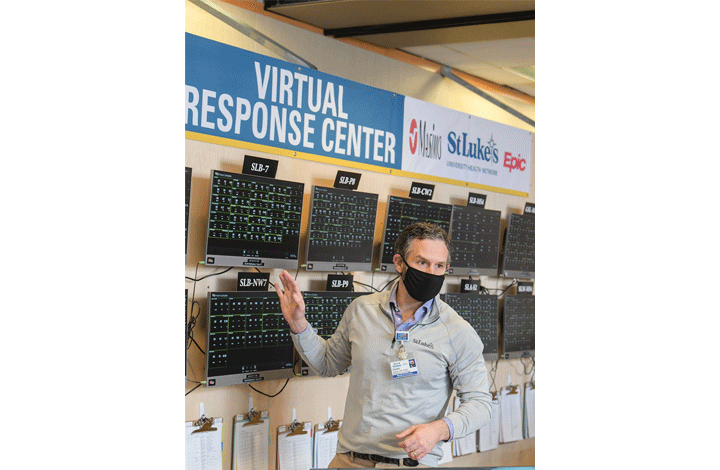
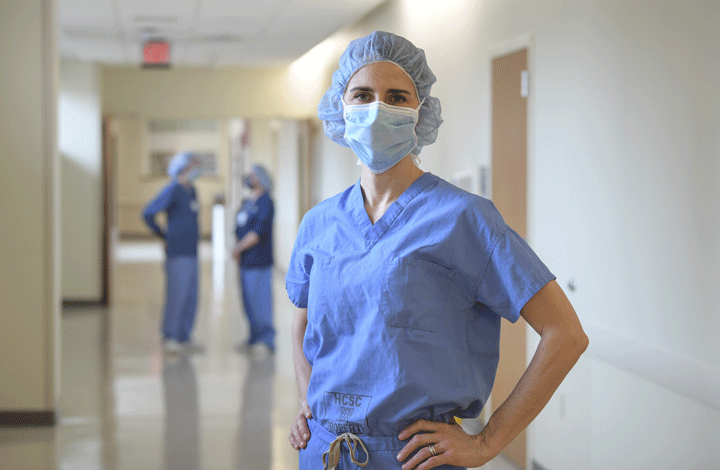
Infectious Disease Specialist Dr. Kara Mascitti
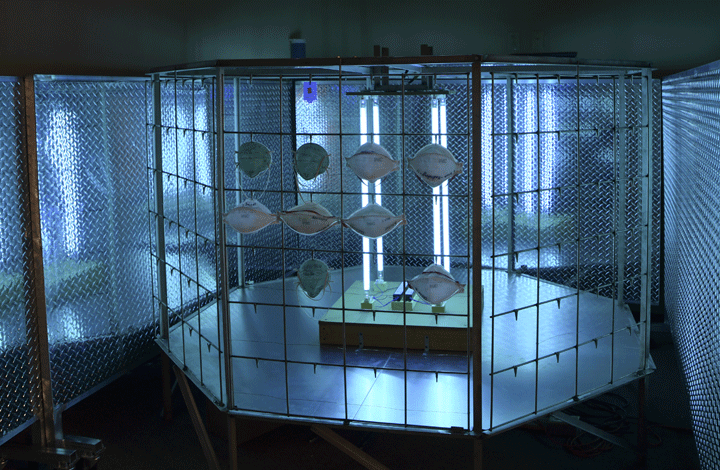
In addition to achieving a higher survival rate among hospital inpatients, St. Luke’s also played a key role managing the pandemic, helping to “flatten the curve” and manage the community, for example:
- Prompting then Pa. Secretary of Health Rachel Levine to assemble an advisory council of medical experts from health systems throughout the state.
- Assisting Pennsylvania health officials and the state’s Congressional delegation. https://wild.house.gov/
- Serving as the primary Covid advisor to nearly all school districts and institutions of high learning throughout the Lehigh Valley.
- Serving as a trusted source for national and local news outlets. https://www.nytimes.com/2022/01/29/health/omicron-chronic-illness.html
- Establishing a regional COVID vaccination campaign starting in December 2020 through which people have received the shot and follow-up boosters.
- Launching a new technology called “Shot-Line,” an automated scheduling system that allows individuals to self-schedule their appointments over the phone. https://www.slhn.org/blog/2021/st-lukes-new-shot-line-automated-phone-call-system-to-speed-up-pennsylvania-vaccinations
- Recruiting student nurses from schools throughout the Lehigh Valley to give vaccinations in their communities.
- Setting a national example for implementing an employee vaccine mandate. https://www.slhn.org/blog/2021/sluhn-achieves-vaccine-mandate-goal
- Recognizing the role of natural immunity and incorporating this understanding into policies for our staff and community. https://www.inquirer.com/news/new-covid-vaccine-booster-safety-20220914.html
- Requiring vaccination for access to St. Luke’s Fitness Centers, setting an example widely followed by others.
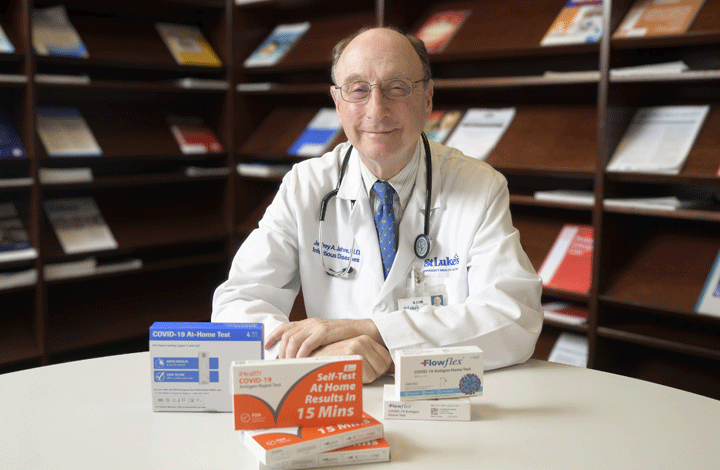
Infectious Disease Specialist Dr. Jeffrey Jahre
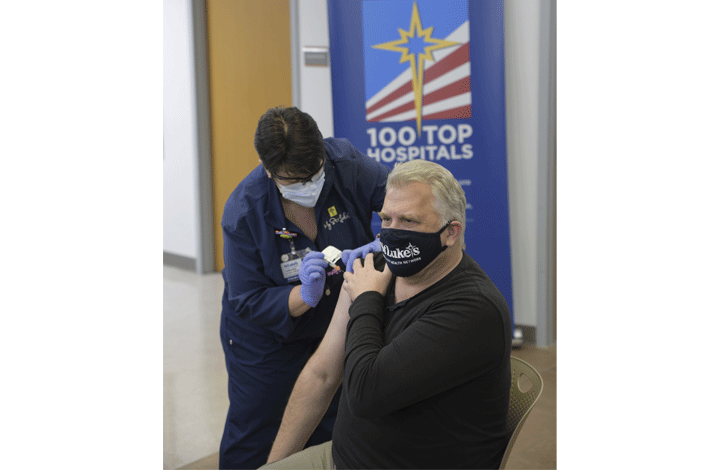
St. Luke’s exceptional COVID care extends to the post-acute infection experience as well. In March 2021, the Network established the first “long-COVID syndrome” program in the region, and one of the first in the nation, to assess and treat recovered COVID patients who continued to experience lingering minor symptoms after three months, including fatigue, brain fog, muscle aches, heart muscle dysfunction, lung damage, depression, loss of smell and other complaints. In some cases, diagnostic imaging was performed to rule out more serious heart and lung conditions.
According to the program’s director, Dennis McGorry, MD, family medicine, to date more than 6,000 patient visits have been completed via the eight clinics throughout SLUHN for treatment of long-COVID, including speech, physical and occupational therapy, mental health care and medication prescribing.
“Fortunately, as the COVID cases become milder, due to access to the vaccines and boosters, we are seeing fewer patients with this post-acute COVID syndrome, but we are still prepared to care for them,” McGorry said.
Read More News
Latest News


January 08, 2026
Miners Campus Expands Sleep Lab

December 30, 2025
